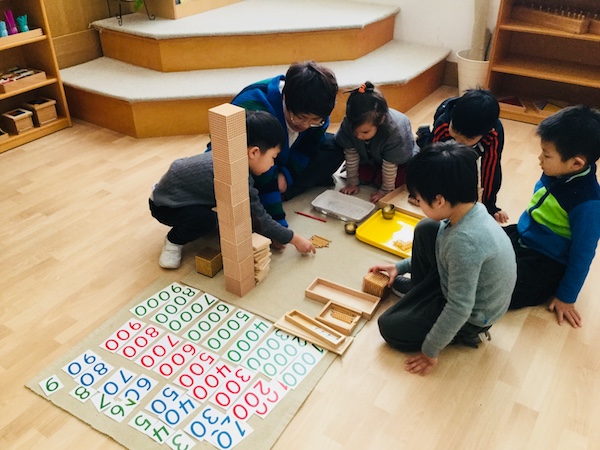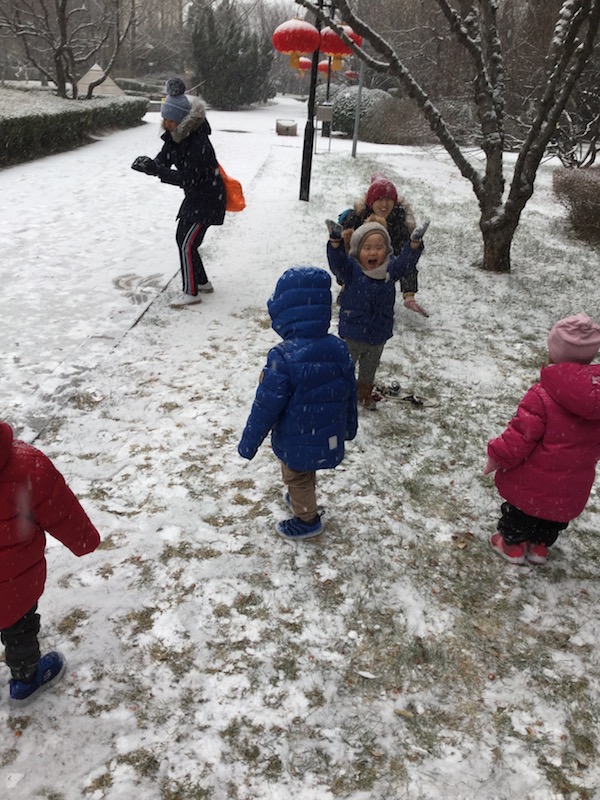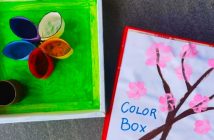It is often said that a good teacher can bring out the best in a student but can a school bring out the best in a teacher, too? Thanks to an environment that encourages learning, sharing, and development both inside and outside the classroom, that certainly seems to be the case for the teachers at AnRic Little Montessori Room.

AnRic’s teachers help to create a learning and growth-focused environment
AnRic’s diverse teaching staff is made up of teachers with experience from all over the world, including the Philippines, Canada, Peru, France, and the UK, a great fit for the school’s equally diverse student body. Perhaps more unusually, a number of the teachers also came to Montessori teaching later in life, creating an interesting mix of skills and backgrounds. These teachers are quick to heap praise on AnRic’s learning and growth-focused environment.

Teacher Camel Ren working with a group of children
Within the Montessori industry, AnRic is known as somewhat of a gold standard among teachers. For teacher Camel Ren, who previously studied law and owned an English training center before deciding to become a Montessori teacher, her Montessori training didn’t stop when she earned her credentials from the American Montessori Society. “As much as I learned a lot during my training, I could say that my real education started when I entered the AnRic classroom,” she says, laughing. “The kids are so curious and eager to learn that it is always challenging me to introduce new concepts and methods.” Understandably, this is not always easy, but it seems to be a welcome challenge for AnRic teachers. Xiaoxiao Tang, who holds a master’s degree in Special and Inclusive Education from University College London agrees. “There is no such thing as a comfort zone for teachers at AnRic. You have to always learn, change and adapt.”

The atmosphere at AnRic brings out the staff members’ passion for teaching
To further foster this environment, AnRic has adopted what it calls a “360-degree” evaluation method wherein everyone evaluates everyone else, regardless of status or level. This evaluation, held in a major faculty meeting twice a year, encourages openness and problem solving, and allows teachers to share techniques and content that they have recently successfully applied in their classroom.
A common theme heard among AnRic teachers is the emphasis of a symbiotic relationship between the school and its teachers, each supporting the other’s existence, passions, and growth. AnRic encourages teachers to bring their non-pedagogic skills and passions into the classroom and to make unexpected connections, something that fits well with the format of the Montessori classroom. The primary goal of Montessori education is to foster a child’s natural inclination to learn, so the classroom is a carefully and meticulously prepared environment where children can choose what they would like to do or work on. That said, the three classrooms in AnRic are not carbon copies of one another. Each class has its own character, simply because each class is made up of different children and teachers, thus reflecting a wide array of different interests and development levels.

AnRic teachers are encouraged to bring their non-pedagogic skills into the classroom
For Julia Zhou, that leaves plenty of opportunities to bring her background and love for art into the school environment not just in terms of what is visually experienced and perceived but also the deep, critical thinking that often accompanies art. Born and raised in Canada, Julia has a creative background in digital art, figurative drawing, painting, and watercolor. In Beijing, she also does freelance illustration and painting. But aside from the creative skills that make it into the classroom, Julia’s also has a bachelor’s in anthropology from McGill University in Montreal and is able to apply what she learned to her work at AnRic. “AnRic has supported a lot of my personal growth and I am forever grateful for my time here… we try to give the children a strong basis to reach their own potential, such as empathy, resilience, creative problem solving, flexible thinking, and independent learning, which are Montessori inspired but are ultimately just human. I believe AnRic is very special because of its requirements for the teacher to maintain consistency within every action in the classroom in accordance with its values, which involves constant self-reflection, critical thinking, and awareness,” she says. AnRic is cautious about applying labels and Julia believes that anthropological modes of thinking can help children to understand that there is no right and wrong or good and bad in a piece of artwork or writing.

A diverse student body needs a diverse teaching staff
Similarly, Rachel Jarrot-Diaz pulls on her experience of living in three totally different countries — Peru, France, and China — over the past 15 years. “On the surface, these three countries are totally different but what they do have in common is that they are rich in culture, steeped in tradition, and unique in language. AnRic is a multicultural school that encourages me to share my knowledge and experiences without boundaries and judgments,” she explains. Xiaoxiao Tang also ties in her background and beliefs about in special and inclusive education in her work. “An inclusive environment is something that I am always working on. I believe it is important for kids with Special Educational Needs (SEN) to learn in a typical environment, and it is also important for typical children to understand that there are many ways to offer support without judgment”. At AnRic, teachers work on the fundamental principle that every person is different and that needs differ from person to person. Children learn at an early age to respect the physical, emotional and intellectual differences among their peers. And so do teachers, whether they are working with children, parents or one another.

Encouraging an innate desire to learn
The Montessori approach is based on the fact that Children are innately curious and possess a natural desire to learn. At AnRic, this quality is encouraged notably in the children but in the teachers, too; every day is an opportunity to build on their existing skills and pick up new ones. AnRic’s fundamental values are inherent in their teachers and this propels AnRic teachers to become the best version of themselves while pursuing their individual passions. As assistant principal Jennifer Sau says, “The best way for us to be good role models for the children is to show them that there no matter what life throws at us, there is always something new for us to learn.”

This post is paid for by AnRic Little Montessori Room.
Photos: AnRic Little Montessori Room




